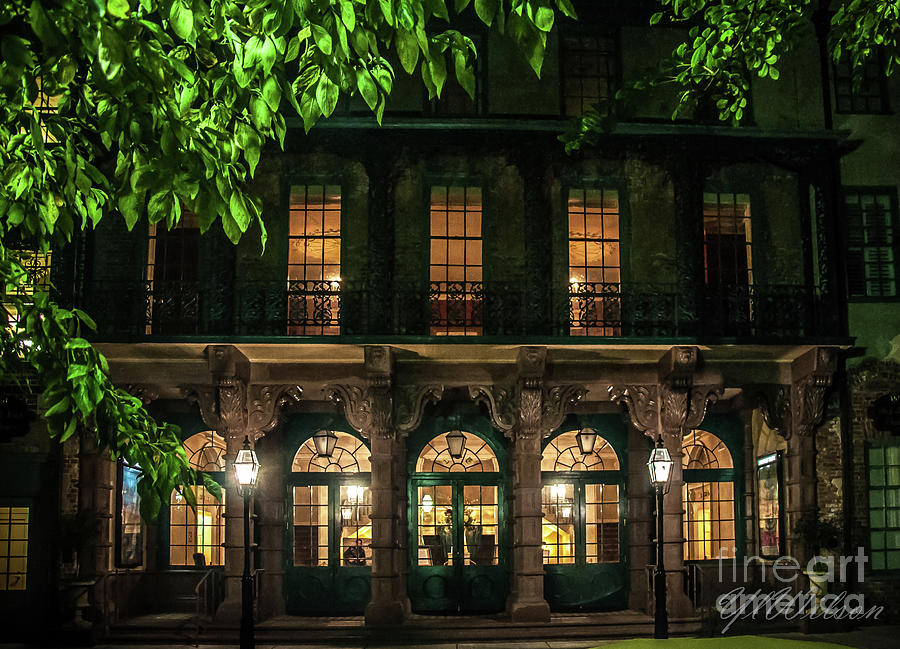

#Footlight theater charleston professional#
This professional dance company has been in Charleston for about 25 years.

The Sottile Theatre opened in 1927 and today seats 785 people, making it one of Charleston's largest formal theaters. Its piazza and gardens are ideal for receptions - not to mention its prime location just off King Street. Sottile is one of the few historic theaters in Charleston that can be rented out for parties and dinners. Dock Street recently underwent a $19 million renovation in order to preserve this historic landmark in downtown Charleston.īecause Sottile Theatre is owned by the College of Charleston, it offers performances put on by students in addition to professional groups. Since Dock Street is the most most popular theater in Charleston, it hosts many of the Spoleto Festival events. It is home to the Charleston Stage Company, which is the largest professional theatre company in the state. When it opened its doors in 1736, the Dock Street Theatre was the first building in the United States dedicated solely to theatrical performances. Charleston’s arts scene certainly also tops this list, so I’ve also included some of the best venues and performing arts groups below in case you want to check them out! Dock Street would remain the home of the Footlight Players until 1986, when they moved to their present facility at 20 Queen Street.Charleston, SC is known having a rich history, fine culinary scene, unique architecture styles, and some of the best beaches in South Carolina. The theater’s second grand opening took place on November 26, 1937, with a revival of The Recruiting Officer presented by Charleston’s Footlight Players, directed by Emmett Robinson. The stairs on the right and left of the balcony and drawing room, for example, were cast from molds of the originals. Many original materials were saved, but when that wasn’t possible, exact copies were made. A commodious orchestra pit was added to the traditional 18th-century apron stage. The theater celebrated a third opening on March 18, 2010, after a three-year, $19-million renovation by the City of Charleston that melded the building’s history with state-of-the-art lighting and sound, as well as new seating, sound-proofing, heating, and air-conditioning.ĭuring the 1935 renovation, new walls were built from local black cypress rubbed mellow with an ancient formula consisting of iron nails dissolved in vinegar, then waxed to bring out the rich grain. Using Works Progress Administration monies, it was rebuilt as a theater that Charleston architects Albert Simons and Douglas Ellington modeled after 18th-century London playhouses.


It was slated for demolition in 1935, but thanks to the attention of city leaders including Mayor Burnet Maybank, it instead became one of the first historic local structures to undergo renovation. The Planter’s Hotel also added a line of imposing sandstone columns topped with carved mahogany capitals and cornices.Īfter the Civil War, the building fell into disrepair. In 1835, the Church Street façade was improved with the addition of an intricate cast-iron balcony in a morning- glory pattern en vogue during the early 19th century. Robert Smalls, who would later become a Civil War hero for turning the steamer Planter over to the Union Navy, worked as a waiter in the dining room, no doubt serving Charleston’s famed Planter’s Punch, which was introduced at the hotel. Among the notables who visited was famed actor Junius Brutus Booth (father of Edwin and John Wilkes Booth). In 1809, the popular Planter’s Hotel opened on the site. Prior to this time, plays and concerts were presented in the assembly rooms of inns and taverns known as “long rooms.” The same year, Flora debuted, becoming the first opera staged in America. On February 12, 1736, the Dock Street Theatre opened with a performance of bawdy comedy The Recruiting Officer.


 0 kommentar(er)
0 kommentar(er)
